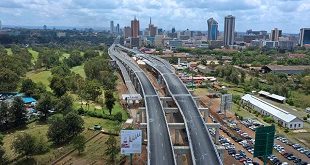
Road users who reported an improvement in their road user experience attributed the improvement mostly to better road maintenance and rehabilitation work accounting for 58% overall of the reasons for improved road user experience. Other reasons included roads that were widened (10%) improved road signage (7%) and quicker journey times and improved road safety each of which accounted for 5% of the reasons. The perception that roads had improved in 2019 was higher among motorists compared to pedestrians, passengers and cyclists.
Still, across the country, a significant amount of dissatisfaction remains among road users and they attribute their dissatisfaction mostly to narrow roads (26%), presence of potholes on the roads (19%), inadequate road maintenance (16%), dust (12%) and poor drainage (9.7%).
Asked why road users feel unsafe on Uganda’s roads, narrow road width was the most common reason (26%) followed by presence of potholes (20%), excessive dust (15%), and reckless driving by motorists (11%). Other barriers to road safety in 2019 mentioned included poor drainage (6%), poor road signage (5%) and frequent road accidents (5%). Ugandan road users perceive “safety” as the risk of getting injury while using the roads, explained Eng. Odongo.
Interestingly, the proportion of road users who felt safe on Uganda’s roads increased from 45% in 2017 to 58% in 2019. National roads (at 2.58 points out of 4) had the highest safety rating of the road networks with city roads scoring 2.54 points and district urban and community access roads 2.58 points in 2019.
Across the regions, roads in western region had the highest safety score (2.74 points) followed by eastern region (2.62 points) while roads in the northern region were considered the least safe in 2019 followed by those in the central region.
Kampala (KCCA) was the only region with a notable improvement in road safety in 2019 compared to the 2017 survey. Users of KCCA roads mostly attributed their improved road user experience to road reconstruction or rehabilitation (26%) followed by regular maintenance (18%), widening of roads (11%) and improved road signage (10%). The introduction of signaling or traffic lights at junctions accounted for about 3% of the improved road user experience on KCCA roads in 2019.
Similarly, reduced traffic congestion featured more prominently on KCCA roads compared to district urban and community access roads as well as national roads.
Meanwhile, ferry services, which are only available on the national roads network, were ranked the most efficient road services followed by construction, traffic management and road maintenance. The respondents, however, faulted road agencies for less than satisfactory performance in post-accident clean-up and development of unsuitable road designs.
Perhaps, unsurprisingly, public opinion about commitment of road agencies towards maintenance of their respective networks was poor with over 65% of the respondents being of the view that road agencies neither fix potholes in time nor to the appropriate standard. But this was especially more pronounced in local governments and KCCA compared to Uganda National Roads Authority (UNRA).
With the exception of security on the roads, national roads were rated better than both district, urban and community access roads and Kampala city roads when it comes to quality of road surface (smoothness), road signs, road markings, durability, absence of traffic congestion, and absence of potholes.
According to the survey, in order to improve road users’ experiences on Uganda’s roads, better road maintenance, upgrading gravel/earth roads to tarmac; widening of roads; construction of more roads and improvement of road safety should be given priority.
Pedestrians who remain the most vulnerable on the roads want more designated pathways, widening of roads, pothole repair, dust control and construction of more pedestrian crossings on the roads.
UNRA scores highly
Road users were also asked to rank road agencies in terms of quality of road services, such as; road maintenance, road construction, traffic management, road design, post accident clean-up, road rehabilitation, and ferry services between national roads.
With the exception of road rehabilitation where KCCA outperformed other road agencies, UNRA was the best rated agency in provision of each of the other road services assessed.
At 2.94 out of 4.0 points, UNRA had the highest overall service provision rating in 2019 followed by KCCA (2.74 points). Similar scores were registered by the two agencies in the 2017 survey. The local governments, at 2.64 points, had the lowest overall service provision rating 2019.
 The Independent Uganda: You get the Truth we Pay the Price
The Independent Uganda: You get the Truth we Pay the Price





